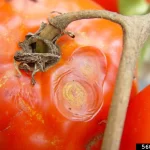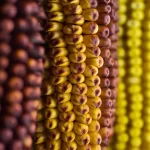Phytophthora infestans
Introduction
Phytophthora infestans, commonly known as late blight, is a notorious pathogen that poses a significant threat to tomato crops worldwide. This devastating oomycete (a “fungus-like” organism) has gained infamy for causing widespread and destructive outbreaks, leading to substantial economic losses and jeopardizing global food security [1]. This pathogen is best known for causing the Irish potato famine in the late 1840s [1]. Its ability to rapidly spread and infect tomato plants, coupled with its capacity to survive under diverse environmental conditions, make it troublesome for farmers and agricultural systems [1].
Originating from the Andean region of South America, Phytophthora infestans has now achieved a global distribution thanks to its exceptional adaptability and numerous means of dispersal [2]. The pathogen can survive in infected plant debris, tubers, and even oospores in the soil, enabling it to persist between growing seasons [1].
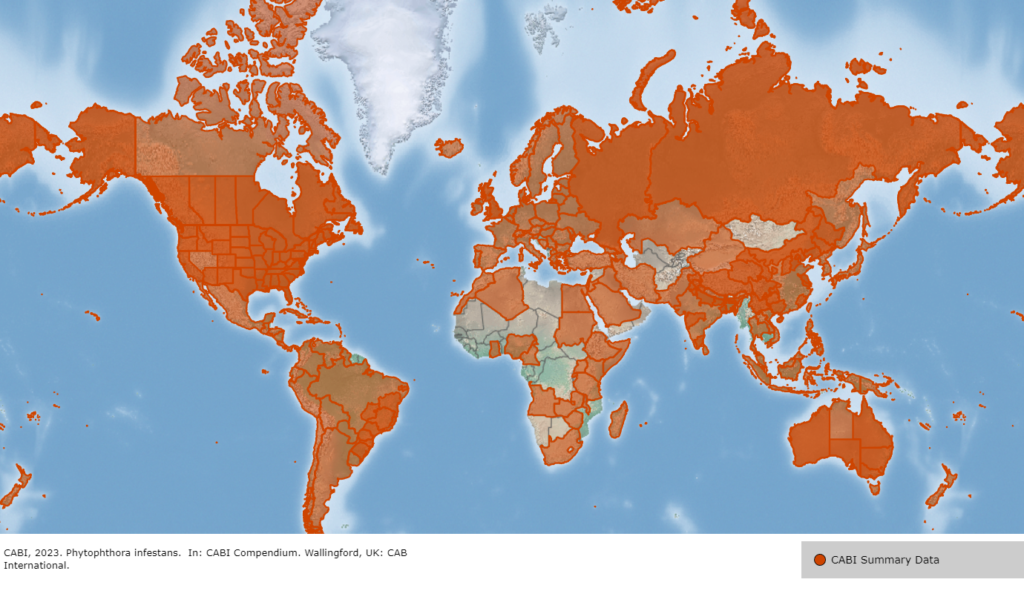
We provide great overviews of many agricultural microorganisms. Subscribe to stay updated!
Symptoms
The symptoms of late blight caused by Phytophthora infestans vary depending on the plant species and the stage of infection. In potato plants, the first symptom is the appearance of water-soaked lesions on the leaves, which later turn brown and necrotic. The lesions can expand rapidly and affect the entire plant, leading to defoliation and death. In tomato plants, the symptoms start as dark green to brown spots on the leaves and stem, which can eventually cover the whole plant. The fruits of both potato and tomato plants can also be affected, with the appearance of dark brown to black spots that render the fruits unmarketable [3].
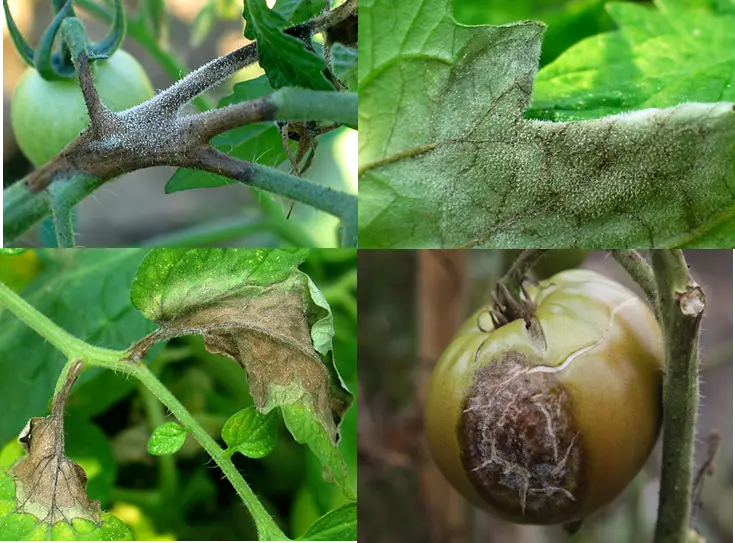
Life Cycle and Infection Stages
The life cycle of Phytophthora infestans is complex and involves both sexual and asexual reproduction. The pathogen overwinters in infected plant debris and soil, and when conditions are favourable, the spores are released and can infect nearby plants through water droplets, wind, or mechanical means. The infection starts when the spores land on a susceptible plant and germinate, penetrating the plant tissue. Once inside the plant, the pathogen grows and spreads rapidly, producing new spores that can be disseminated to other plants. The disease cycle can repeat itself several times during the growing season, leading to significant crop losses [4].
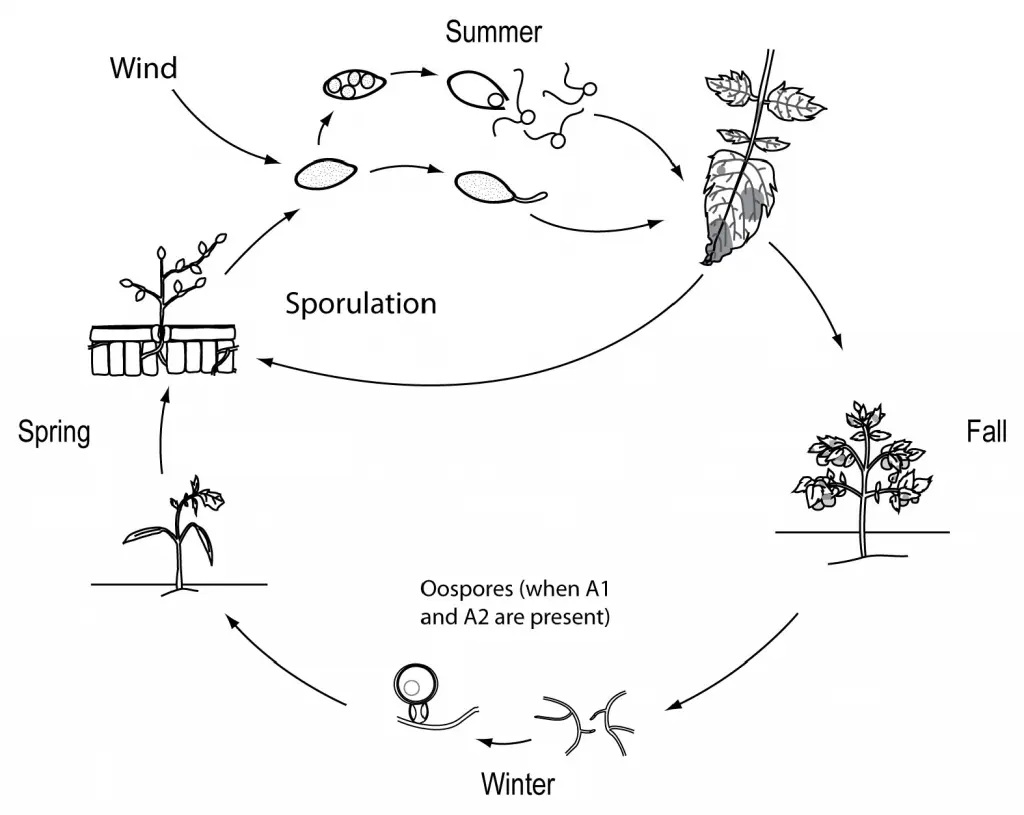
Growth Conditions
Phytophthora infestans thrive in cool and wet conditions, with optimum temperatures for growth and infection between 15°C and 25°C. High humidity and leaf wetness also favour the development and spread of the disease. The pathogen can survive in infected plant debris and soil for several years, making crop rotation and sanitation critical for disease management [5].
Methods of Prevention and Control
Preventing and controlling late blight caused by Phytophthora infestans involves a combination of cultural, chemical, and biological measures. Cultural practices such as crop rotation, sanitation, and avoiding planting in areas with a history of the disease can reduce the risk of infection. Planting resistant cultivars is also an effective strategy, as some potato and tomato varieties have been developed to resist the pathogen. Chemical control involves the use of fungicides to prevent and manage the disease, with early and frequent applications recommended to minimize crop damage. Finally, biological control using natural enemies of the pathogen, such as bacteria and fungi, is also being explored as a sustainable approach to disease management [5].
Conclusion
In conclusion, Phytophthora infestans is a devastating plant pathogen that causes late blight in potato and tomato plants. The disease can result in significant yield losses and is a major concern for farmers worldwide. Preventing and controlling the disease involves a combination of cultural, chemical, and biological measures, with early detection and rapid response being critical for disease management.
Disclaimer
The information we present in Pathogen Profile is based on collating published peer-reviewed scientific literature and sources we think are reliable. This is by no means an exhaustive review of pathogens. Pathogen Profile gives a small glimpse of what is known about pathogens. We encourage growers to do more research on the pathogens concerning their crops and hydroponic systems. We are not plant pathologists; thus, the information presented in the Pathogen Profile should not be used as professional advice to treat pathogens or operate your system.
References
- Quesada-Ocampo, L., & Meadows, I. (2019). Tomato Late Blight Vegetable Pathology Factsheets. Retrieved from https://content.ces.ncsu.edu/tomato-late-blight#section_heading_2023
- Yoshida, K., Schuenemann, V. J., Cano, L. M., Pais, M., Mishra, B., Sharma, R., … Burbano, H. A. (2013). The rise and fall of the Phytophthora infestans lineage that triggered the Irish potato famine. eLife, 2, e00731. https://doi.org/10.7554/eLife.00731
- Gisi, U., & Cohen, Y. (1996). Resistance to phenylamide fungicides: A case study with Phytophthora infestans involving mating type and race structure. Annual Review of Phytopathology, 34(1), 549. https://doi.org/10.1146/annurev.phyto.34.1.549
- Gevens, A., & Wilbur, J. (2014). Tomato Late Blight. Retrieved from https://vegpath.plantpath.wisc.edu/diseases/tomato-late-blight/#:~:text=Disease%20cycle,that%20can%20infect%20host%20tissues.
- Ivanov, A. A., Ukladov, E. O., & Golubeva, T. S. (2021). Phytophthora infestans: An Overview of Methods and Attempts to Combat Late Blight. Journal of Fungi (Basel, Switzerland), 7(12), 1071. https://doi.org/10.3390/jof7121071
![]()
Tanya Irani is the CEO of Healthy Hydroponics InnoTech


